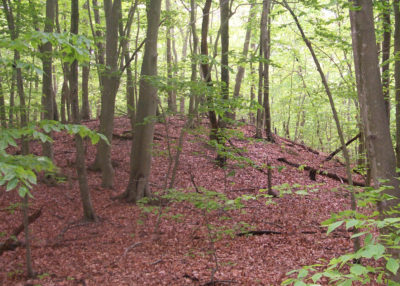Blog
A Study of the American Chestnut in Our Backyard
American Chestnut Leaf (right), photo by Michael Bottini
Did you catch “Helping the American Chestnut Survive” – Mike Bottini’s column in the Southampton Press/East Hampton Press/Sag Harbor Express in June?
In the story, Mike visits the Trust’s Silver Beech Preserve in Amagansett to see the largest American Chestnut on the South Fork.
![block.image[0].title](/assets/images/AmericanChestnut_SilverBeech_MBottini.jpg)
American Chestnut tree at Silver Beech Preserve. Photo by Michael Bottini
He talks about a fungus, introduced around 1890, that decimated the North American population of trees that once made up 25% of the forests from Maine to Georgia, including here on Long Island.
And, about how dedicated volunteers from Seatuck Environmental Association and Save the Great South Bay, led by naturalists John Potente and co-directors of the American Chestnut Foundation’s Long Island Chapter, Frank Piccinnini and Niko Nantsis are working to restore the American Chestnut population here on Long Island.
Check out the article for more on the history and how you can help in their restoration efforts.
Cover photo: The more common Beech leaf (left) and Chestnut leaf (right). Mature chestnut leaves are approximately the same width but significantly longer and have more pronounced “teeth” along the leaf margin or edge.


